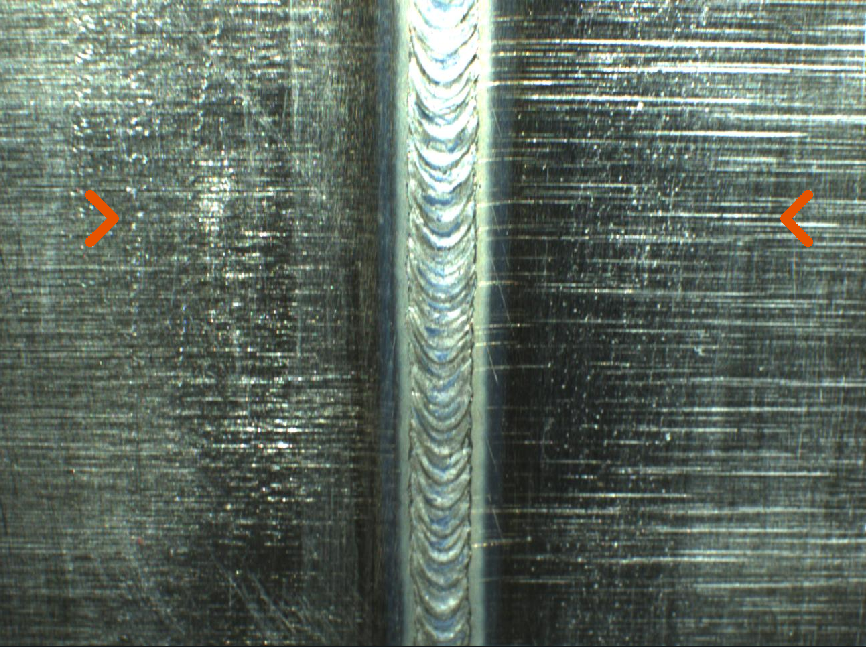The Ultimate Guide to Welding Inspection Racine for Industrial Requirements
The Ultimate Guide to Welding Inspection Racine for Industrial Requirements
Blog Article
Ingenious Strategies to Fillet Weld Inspection and Screening: Enhancing Weld High Quality and Conformity Specifications
In the world of welding, the quality and honesty of fillet welds play an important function in making sure the structural soundness and reliability of various industrial parts. With the consistent drive for enhanced efficiency and conformity with stringent criteria, the exploration of ingenious strategies to fillet weld examination and testing has actually come to be vital. As industries evolve, the standard approaches might no much longer be adequate in fulfilling the needs of modern welding applications. By welcoming advanced technologies and methods, a brand-new horizon of possibilities emerges in the world of weld top quality assessment and adherence to conformity requirements.
Advanced Non-Destructive Screening Approaches
Utilizing modern innovations, advanced non-destructive testing methods play a vital function in guaranteeing the integrity and high quality of fillet welds. These methods, such as phased variety ultrasonic screening (PAUT) and magnetic particle screening (MPT), offer detailed insights right into the weld's interior structure without causing any kind of damage to the material. PAUT, as an example, makes use of multiple ultrasonic components to check the weld from various angles, providing a comprehensive visualization of prospective problems like lack of fusion or cracks.
Likewise, MPT works in identifying surface-breaking flaws by applying a magnetic field and iron bits to the weld area. This method is specifically beneficial for recognizing stoppages that may endanger the weld's strength. By utilizing these sophisticated non-destructive screening techniques, weld examiners can accurately examine the high quality of fillet welds, making certain compliance with sector standards and laws. The ability to identify imperfections beforehand not just boosts weld top quality but additionally avoids pricey rework or failings in structural integrity, underlining the value of these innovative screening methods in welding assessments.
Robotics and Automation in Evaluation
The integration of robotics and automation has actually revolutionized the evaluation procedure for fillet welds, boosting effectiveness and accuracy in top quality evaluation. Robotics use specific control and repeatability in examining welds, guaranteeing dependable and constant results. Automated systems can be configured to adhere to certain evaluation courses, ensuring detailed protection of welds and minimizing the risk of human mistake.
Robotic evaluation systems equipped with innovative sensors can find and gauge weld functions with high precision, giving in-depth data for analysis. These systems can recognize issues such as fractures, lack of blend, and porosity, enabling punctual restorative actions to be taken. Furthermore, robotics and automation permit for real-time data collection and evaluation, giving instant responses to operators and promoting quick decision-making procedures.
Additionally, using robotics and automation in fillet weld inspection improves overall efficiency by minimizing assessment times and boosting examination throughput. By simplifying the examination procedure, manufacturers can guarantee weld top quality and conformity criteria are fulfilled efficiently, ultimately leading to cost financial savings and boosted product high quality.
Utilizing Expert System for Analysis
Synthetic knowledge plays a pivotal role in boosting the efficiency and precision of analysis in fillet weld evaluation processes. AI formulas can swiftly refine vast quantities of data from weld examinations, detecting defects or disparities that may be testing to identify with the naked eye - Welding Inspection Racine.
Moreover, AI systems can find out from previous evaluation data, consistently enhancing their ability to determine potential problems and discrepancies in fillet welds. This adaptive learning ability improves the overall high quality control process, decreasing the probability of human mistake and making certain that welds meet the needed standards. By incorporating expert system into fillet weld analysis, industries can attain greater degrees of performance, consistency, and compliance in their examination methods.
Portable Equipment for On-Site Evaluation
 Enhancing field examination efficiency, the fostering of portable tools changes on-site analysis procedures for fillet welds. These devices offer flexibility and benefit, allowing assessors to conduct thorough exams in different areas, including remote or difficult environments. Mobile tools such as ultrasonic screening gadgets, magnetic fragment examination devices, and electronic radiography systems supply real-time data and high-resolution imaging capabilities, enabling quick decision-making and prompt feedback on weld high quality.
Enhancing field examination efficiency, the fostering of portable tools changes on-site analysis procedures for fillet welds. These devices offer flexibility and benefit, allowing assessors to conduct thorough exams in different areas, including remote or difficult environments. Mobile tools such as ultrasonic screening gadgets, magnetic fragment examination devices, and electronic radiography systems supply real-time data and high-resolution imaging capabilities, enabling quick decision-making and prompt feedback on weld high quality.One significant benefit of mobile devices is their capability to streamline examination procedures, minimizing downtime and boosting general efficiency. Assessors can quickly deliver these devices to various job websites, removing the demand for carrying heavy equipment or elements to off-site facilities. Additionally, the transportability of these tools advertises cost-effectiveness by reducing transport costs and speeding up inspection timelines.
Moreover, the use of mobile tools for on-site assessment promotes positive quality assurance procedures, as assessors can quickly identify and address any kind of prospective welding issues or discrepancies. By integrating these cutting-edge modern technologies right into on-site assessment methods, welding experts can make certain compliance with industry criteria and boost weld high quality, eventually leading to enhanced architectural honesty and security in different welding applications.
Combination of Information Management Equipment
Having actually maximized on-site examination procedures via the usage of portable devices, the next phase entails the smooth integration of data monitoring systems to further enhance efficiency and data evaluation capacities in fillet weld evaluation and screening. Welding Inspection Racine. By integrating data monitoring systems right into the evaluation procedure, companies can simplify data collection, storage space, and analysis. This assimilation enables for real-time surveillance of weld high quality, immediate identification of problems, and Bonuses timely decision-making to correct any problems that might occur during the evaluation procedure
The assimilation of data monitoring systems allows seamless communication in between different stakeholders involved in the examination procedure, fostering partnership and enhancing total high quality control actions. Eventually, the assimilation of information monitoring systems offers to elevate the criteria of fillet weld assessment and testing, top article making sure compliance with industry laws and improving weld high quality.
Verdict
To conclude, ingenious strategies to fillet weld inspection and screening have dramatically improved weld high quality and conformity standards. Advanced non-destructive screening approaches, robotics, automation, synthetic intelligence, mobile tools, and information administration systems have reinvented the method weld assessments are performed. By using these modern technologies, markets can make sure that welds meet the needed top quality criteria and policies, ultimately improving general efficiency and security in welding procedures.

By using these innovative non-destructive screening techniques, weld inspectors can accurately analyze the high quality of fillet welds, making certain conformity with market standards and regulations. Mobile tools such as ultrasonic testing tools, magnetic particle inspection devices, and digital radiography systems supply real-time information and high-resolution imaging abilities, making it possible for quick decision-making and instant responses on weld quality.
Having maximized on-site evaluation processes with the application of portable tools, the following stage includes the seamless assimilation of data administration systems to even more enhance effectiveness and data evaluation abilities in fillet weld assessment and testing (Welding Inspection Racine). Inevitably, the combination of data management systems serves to elevate the standards of fillet weld examination and testing, guaranteeing compliance with sector policies and enhancing weld top quality
 In final thought, innovative approaches to fillet weld assessment more tips here and testing have actually dramatically enhanced weld high quality and compliance criteria.
In final thought, innovative approaches to fillet weld assessment more tips here and testing have actually dramatically enhanced weld high quality and compliance criteria.Report this page